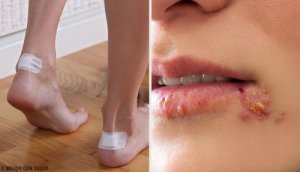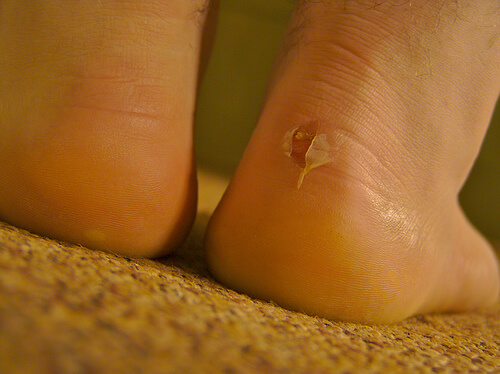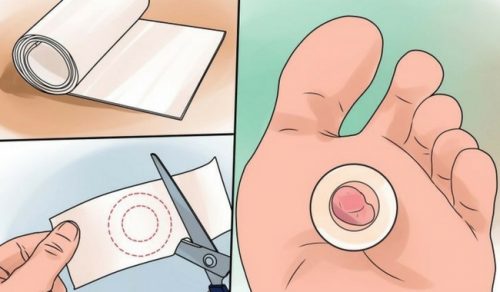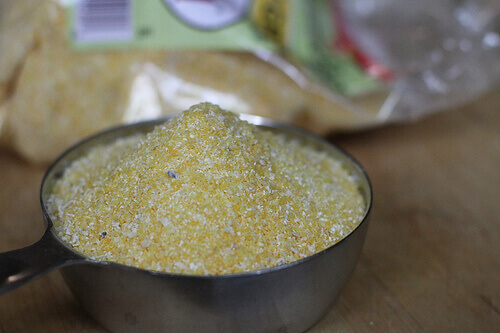5 Ways to Heal and Eliminate Blisters


Written and verified by the doctor Karla Henríquez
Do you know how to eliminate blisters?
Blisters are small and uncomfortable lesions that result from constant friction. They usually appear around the heels and ankles, but they are also found in other parts of the body.
Literally anywhere that is covered by skin and is exposed to friction is prone to develop these injuries. Even scratching an area too much can sometimes result in terrible blisters.
Overall, a blister is the painful outcome of tissue that’s been damaged by friction. They commonly appear around the feet due to poor footwear choices.
Eating foods that are too hot or cold can also trigger a small outbreak of blisters in the gums or elsewhere inside the mouth. Something as simple as an insect bite can even result in a blister if you scratch it too often or don’t take care of the wound. Plus, a burn of any kind can leave a trail of blisters.
Today, we want to share five ways to get ride of them, and how you can properly heal them.
Blisters? Find out how to eliminate them
Check out the following five solutions
1. Let them breathe

This is a practical solution and you’re guaranteed instant relief.
Following this golden rule for blisters will make those unpleasant wounds gradually heal. The longer the blister is exposed to air, in fact, the faster the healing process will be.
If you need to, wear a bandage to walk around. In this case, ensure that it’s loose. Keep the center of the bandage slightly raised so that air can flow beneath it.
Visit this article: 9 remedies to cure blisters
2. Apply a topical ointment
You read that correctly. Although it might seem obvious, the use of an ointment can make a big difference and considerably prevent the spread of your injury. Topical creams shorten the duration of a blister and eliminate many of the negative consequences – if, of course, you choose the right treatment.
After removing any dirt or debris from your blister, you’ll probably want to apply an antibacterial ointment. A gel cream might be a good option because it can also feel refreshing.
3. Always dry the blister

- Clean the blister with water and antiseptic soap.
- Gently break blister along the edge using a sewing needle sterilized with rubbing alcohol, and drain all the fluid.
- Don’t remove the top layer of skin, as this can protect you against infection.
- Remember to keep the affected area dry.
4. Aloe for healing blisters
Ah, you again – the plant that treats countless conditions. Blisters really can be a headache, especially for athletes and people who typically deal with external factors like rain or sun or certain shoes or equipment.
Here’s the solution for you:
- Cut open the leaf of an aloe vera plant, both along the length and across it.
- Apply the gel inside to the affected area and you’ll immediately notice an improvement.
Do you want to know more? 5 remedies with aloe vera that help you cleanse the colon
5. Cornmeal

This recipe will help you treat those annoying blisters.
Ingredients
- 1 tablespoon of cornmeal (10 g)
- 1 tablespoon of honey (25 g)
What should you do?
- Mix the cornmeal and honey until a paste forms.
- Apply it to your blister. It will help you avoid a possible infection.
Finally, if your discomfort continues after these treatments, it’s best to see a doctor who can evaluate the damage to your skin and prescribe something to help you heal.
All cited sources were thoroughly reviewed by our team to ensure their quality, reliability, currency, and validity. The bibliography of this article was considered reliable and of academic or scientific accuracy.
- Moliné, J. y S. M. (1999). Primeros auxilios : quemaduras. NTP 524: Primeros Auxilios: Quemaduras.
- Santos Heredero, F. X., Rodríguez Arias, C. A., Barberán López, J., Martín Antona, E., Pérez del Caz, M. D., Torres García, A., … Viadé Juliá, J. (2014). Heridas y Cicatrización. Revista de La Sociedad Española de Heridas.
- Ruiz, E. F. (2013). Antisépticos y desinfectantes. Enfermedades Infecciosas y Microbiologia. https://doi.org/10.1007/s00299-010-0857-1.
This text is provided for informational purposes only and does not replace consultation with a professional. If in doubt, consult your specialist.








